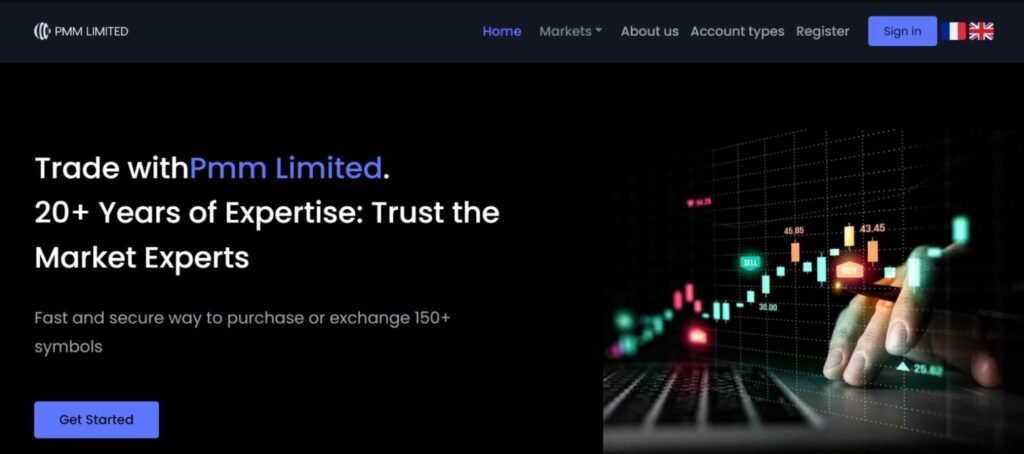business
From Pollution to Payment: Assessing Damages in AFFF Contamination Cases
From Pollution to Payment: Assessing Damages in AFFF Contamination Cases

AFFF contamination cases have become a complex intersection of environmental and legal landscapes, sparking contentious debates in recent years. Aqueous Film-Forming Foam (AFFF), utilized for its effectiveness against flammable liquid fires, has unwittingly become a significant pollution source. Its high per- and polyfluoroalkyl substances (PFAS) levels contribute to environmental contamination.
Persistent PFAS chemicals, with known health risks, infiltrate soil and water, raising significant environmental and public health worries.
The spread of AFFF contamination prompts litigation, as impacted communities demand compensation for ecosystem and health damages. They seek redress for ecosystem and health damages. However, damage assessment in these cases is complex, involving various factors such as contamination extent and long-term health impacts. It considers both human and wildlife health implications.
In this article, we explore assessing damages in AFFF contamination cases, revealing methodologies used by experts, legal practitioners, and regulatory bodies.
Understanding AFFF Contamination
AFFF contamination stems from the widespread use of firefighting foam containing PFAS. PFAS are synthetic chemicals that resist heat, water, and oil, making them ideal for extinguishing flammable liquid fires. However, their durability also renders them persistent in the environment, with the ability to accumulate in soil, groundwater, and surface water over time.
This persistence poses significant challenges for remediation efforts, as PFAS compounds can remain detectable for decades after their initial release.
According to EHN, approximately 57,412 locations across the US are likely contaminated with toxic PFAS. The sites include industrial facilities, waste processing sites, airports, and military bases where PFAS-containing firefighting foam has been used. Published in the journal Environmental Science & Technology Letters, the study identified probable PFAS contamination sites in all 50 states.
Understanding the pathways and impacts of AFFF contamination is essential for assessing damages accurately and implementing effective mitigation strategies.
Health and Environmental Impacts
The health and environmental impacts of AFFF contamination are profound and far-reaching. PFAS exposure is associated with adverse health effects in humans, such as cancer and immune system dysfunction. Reproductive disorders are also linked to PFAS exposure.
Also, PFAS bioaccumulate in the environment, posing threats to wildlife and ecosystems. Aquatic organisms, such as fish and amphibians, can suffer reproductive and developmental abnormalities due to PFAS exposure. Besides, contaminated drinking water sources pose a direct risk to human health, with communities facing heightened concerns about long-term exposure and associated health risks.
According to the American Cancer Society, studies examined cancer rates near PFOA-related chemical plants, suggesting elevated risks of testicular and kidney cancer. Some studies hinted at thyroid cancer links, but small risk increases could be coincidental. Other research hinted at possible connections to prostate, bladder, breast, and ovarian cancer.
The widespread nature of AFFF contamination underscores the urgency of assessing damages and implementing remediation measures to safeguard public health and environmental integrity.
Legal Framework for AFFF Contamination Cases
Understanding the legal terrain in AFFF contamination cases necessitates grasping environmental pollution regulations and liability laws. Federal statutes like CERCLA and the CWA offer mechanisms for tackling contamination and assigning accountability. They provide frameworks for addressing damages and ensuring responsible parties are held liable.
State laws contribute significantly, imposing additional pollution control standards. Plaintiffs in AFFF cases commonly base claims on tort law, alleging negligence or strict liability against foam-related entities. These legal principles hold manufacturers, distributors, and users accountable.
Assessing Damages in AFFF Contamination Cases
The human cost of AFFF contamination can be significant. Individuals exposed to PFAS may face a range of health problems, including certain cancers, immune system deficiencies, and developmental issues in children. Also, property values can plummet when a community’s water supply is found to be tainted with PFAS.
Determining the appropriate level of compensation in AFFF contamination cases requires a careful evaluation of all damages. Damages in AFFF contamination cases encompass various factors, including medical expenses covering past, present, and future costs of PFAS-related illnesses. Recoverable losses encompass lost wages due to PFAS-induced illness or disability, along with compensation for pain and suffering.
Also, reduced property value due to contamination constitutes a substantial financial loss for plaintiffs.
As of now, large-scale AFFF lawsuit settlements haven’t occurred, but some PFAS contamination cases have reached settlements in tens of millions. AFFF lawsuit settlement amounts are expected to vary depending on individual case severity and factors such as health issues and exposure levels. The economic ramifications of the contamination also influence settlement fluctuations.
TruLaw reports that AFFF lawsuit settlement amounts may vary significantly, ranging from $10,000 to over $300,000. Settlements hinge on claim strength, exposure level, and severity of medical issues experienced by plaintiffs in AFFF contamination cases.
Challenges and Considerations
Assessing damages in AFFF contamination cases presents numerous challenges and considerations. Firstly, PFAS complexity and persistence pose challenges in accurately assessing contamination extent and predicting long-term impacts. Also, determining causation can be challenging, particularly in cases where multiple sources of contamination are present.
Additionally, the legal landscape regarding AFFF contamination is dynamic, with evolving regulatory standards and liability frameworks. This uncertainty complicates litigation and settlement negotiations, often leading to prolonged legal battles. Addressing AFFF damages demands a comprehensive approach, balancing tangible and intangible costs, posing a significant challenge for stakeholders.
Mitigation and Prevention Strategies
MPR News reported in 2024 that at current emission rates, the cost of removing PFAS exceeds global GDP. The expense of eliminating and disposing of one pound of PFAS from the environment ranges from $1 million to $50 million. This underscores the urgency of implementing effective strategies to mitigate PFAS contamination and reduce the financial burden on global economies.
Mitigating and preventing AFFF contamination demands a proactive stance, amalgamating remediation endeavors with preventive actions to mitigate future risks. Remediation commonly entails treating or eliminating contaminated soil and water through techniques like activated carbon filtration. Soil vapor extraction is also employed to curb the dissemination of PFAS compounds.
Preventive measures involve initiatives like developing environmentally friendly firefighting foams and enforcing stricter AFFF regulations. Also, education efforts are vital for increasing awareness of AFFF risks and promoting responsible practices among firefighting personnel and industries.
Frequently Asked Questions
What damages are typically considered in AFFF contamination cases?
AFFF contamination lawsuits seek compensation for the various ways communities are harmed. This includes medical expenses for PFAS-related illnesses, lost wages due to disability, and emotional distress. Property values can also take a hit due to tainted water supplies.
How do regulations affect damages assessment in AFFF lawsuits?
Regulations can impact AFFF lawsuit damages in a few ways. Stricter PFAS drinking water standards might influence how much a property value decline is valued. Also, evolving regulations around acceptable PFAS exposure levels could influence the types of health problems considered compensable.
What challenges arise in proving damages in AFFF cases?
Proving damages in AFFF cases presents hurdles. Pinpointing the exact source of PFAS exposure can be difficult, as contamination often occurs over a long period. Also, establishing a direct link between PFAS exposure and specific health problems can be challenging due to the emerging nature of the science.
Striving for Environmental Accountability
The path from pollution to payment in AFFF contamination cases is fraught with complexities, challenges, and ethical dilemmas. In the aftermath of contamination, communities seek justice through the assessment of damages, a crucial step toward environmental accountability and restitution. This process plays a pivotal role in addressing the impacts of pollution and ensuring equitable outcomes for affected parties.
Reflecting on past settlements and litigation outcomes, proactive mitigation and prevention strategies emerge as crucial to combating AFFF contamination’s pervasive effects. Embracing innovation, responsible stewardship, and stakeholder collaboration are essential for safeguarding environmental integrity and empowering communities to thrive amidst pollution challenges.
business
Stanley Charles Review – Check Out this Amazing Online Broker For Crypto Trading
Stanley Charles Review Having the right online brokerage firm for your trading efforts is vital. It ensures that you have all the things that you need to make the most out of your efforts.

Having the right online brokerage firm for your trading efforts is vital. It ensures that you have all the things that you need to make the most out of your efforts. However, the essential thing to do is carry out extensive research to find out whether or not it is the right choice to go with a particular online brokerage firm. Fortunately, there is no need to go through any of that hassle because this Stanley Charles review is here to help you out.

It will provide you with a comprehensive idea of what you can get from this online broker. So, without further ado, let’s learn what you can get from the Stanley Charles broker platform.
Sign Up With the Platform As Soon As Possible
Thefirst thing that I would like to add is that the Stanley Charles broker platform lets you get started with your trading efforts without going through a lot of trouble. All you have to do is provide a few basic details and then you can get started with your trading efforts. Any trader wouldn’t want to sign up with a trading platform that makes them go through a long and hectic sign-up process.
It is an indication that you will continue to see some attitude of the platform in the future as well. Therefore, the Stanley Charles trading platform makes sure that you can get started with your trading efforts as soon as possible. Plus, the amazing interface makes it easy for you to understand the features and functionalities that this platform has to offer.
Choose the Right Account Type for Your Trading Efforts
After you sign up with the platform, you have to choose the right account type. It might sound strange since a lot of online brokers tend to have a single or limited number of account plans. However, that is not the case with the Stanley Charles broker platform as it provides you with a wide range of account types. Therefore, you can choose the account type that is suits your needs.
The basic account type would be a much better option for traders who are just getting started with their trading journey. On the other hand, the advanced tier accounts would be more suitable for those who have been in the industry for quite some time. You can also upgrade your account type on the Stanley Charles trading platform whenever you feel there is a need.

Check Out the Latest News and Updates
There is no telling when you can expect something massive to happen in the crypto market. It is an evolving sector so there is a lot that is going on in the market. From new legislation to regulate the market to new technological changes, you need to stay updated with all of these things. This is because each of these updates has the potential to impact the crypto market.
However, it doesn’t mean that you sit in front of the computer screen all day long. With the Stanley Charles broker platform, you can get continuous updates about the things happening in the market. As a result, you can be on the go and still know about the things happening in the market. Since the Stanley Charles trading platform has a web-based portal, you can easily access it from anywhere at any time.
KYC and AML Compliance
Last but not least, I cannot simply underscore how important data security and safety are for the Stanley Charles broker platform. Complying with the KYC (Know Your Customer) and AML (Anti Money Laundering) standards, ensures that no one can use your identity. Not only that, but it also raises the flag for any suspicious activity taking place through your account.
All in all, it ensures that you enjoy a safe and secure environment. You can see the same commitment of the platform in the payment option for depositing funds into your accounts. It will only let you deposit funds through safe and secure methods. For instance, you can use your debit and credit cards that have the MasterCard or Visa logo. In addition to that, the broker maintains separate accounts for the funds deposited by the traders.
Is Stanley Charles Scam or Legit?
The last thing that I want to add in this Stanley Charles review is that this platform ensures that you have all the relevant information that you need to make the most out of your efforts. It is open and honest about its policies, and that is why I believe that it is a legitimate choice for your trading efforts.
Final Words
At the end of the Stanley Charles review, I just want to say that there aren’t many options available in the crypto market like this online broker. Therefore, you should consider using it to achieve your short and long-term goals.
business
PMM Limited Review – A Helpful Trading Platform for Beginners and Trainees
PMM Limited Review Despite the market being so immense and boundless, many brokers only cater to the needs of experienced or veteran traders. This keeps many traders away from starting their journey as they feel unsure and confused.

Despite the market being so immense and boundless, many brokers only cater to the needs of experienced or veteran traders. This keeps many traders away from starting their journey as they feel unsure and confused.
That is why today, in this PMM Limited review, I will talk about a broker platform that I have tested and reviewed recently. This specific trading platform comes with a set of trouble-free features and functions, making it well-fitted for beginners and trainees.

In this review, I will mention all the aspects of the PMM Limited broker platform that make it a good option for traders who have just started their journey. So, let’s go over the different offerings and functions of this digital trading platform and see if it is actually helpful for starters.
Beginner-level User Account Options
The first thing I will discuss is the beginner-level trading accounts that this platform offers. PMM Limited trading platform offers a diverse range of user account options that also includes many beginner-friendly options. It has beginner-level accounts that come with basic features, making it easier for users to start their journey. It only offers essential features and tools so beginners don’t feel overwhelmed or frustrated.
Not to mention, lower-tier trading accounts also cost less than other levels of accounts, making it a budget-friendly option. This can be a bonus for many starters as they might not have a big budget when starting their career.
Availability of Guides and Tutorials
For every trader, it is essential to understand all the fundamental trading and market concepts before starting their journey. That is why the PMM Limited broker platform provides users with various learning materials. It has built an entire library of educational resources for its traders. This library contains different ebooks, articles, guides, and tutorials. Beginners and new traders can use these insightful materials to learn the basics of trading and different financial markets.
They can read detailed ebooks or go through short informative articles to understand both basic and complex trading concepts. They can also use step-by-step guides to understand the different functions of the platform or markets. Video-based tutorials are another option that’s available on the PMM Limited broker platform for users who are more visual learners.

Simple Interface and Responsive Customer Support
User interface is one of the most important things I look for when reviewing any digital trading platform. Choosing a platform that is user-friendly is important for online traders, especially new ones, as you don’t want to face unnecessary complications when using it. If the user interface of the platform is uncomplicated, it is most likely that new traders won’t face difficulties when using it.
PMM Limited trading platform is designed specifically with a simpler user interface so it’s easier for users. Novice traders can easily learn to navigate this digital platform after just a few visits. This way, they will spend more time and focus on learning how to trade instead of trying to understand the platform.
High Accessibility and Compatibility
The last feature that I will discuss in my PMM Limited review is the accessibility and compatibility of this online broker platform. This online trading platform is meant to be highly compatible and easily accessible. It is accessible at any time of the day, so users can use it according to their schedule. It is compatible with various mobile devices like a laptop, tablet, or smartphone.
This ease lets novice traders access the platform whenever they want so they can practice their skills. Plus, with its high compatibility, they can use this platform on any mobile device they own, regardless of whether it’s old or recently bought. They don’t need to have the latest device or operating system in order to use this platform, making it incredibly starter-friendly.
Is PMM Limited Scam or Legit?
Besides this incredible range of beginner-friendly features, the PMM Limited trading platform has some other aspects, like cybersecurity, that are worth appreciating in this review. This platform has designed effective KYC and AML policies to verify each trader who signs up and detects any suspicious activities. With the use of these strict security policies, the risk of cybercriminals and cybercrimes is minimized significantly. Considering that it also has an option for a free trial before signing up, this platform seems legitimate to me.
Summary
All in all, my PMM Limited review is curated to show this platform’s dedication to helping beginners and starters develop their trading careers. This broker has various beginner-friendly user account options that come with easy-to-use features and functions. It provides various educational guides and tutorials so users can learn both basic and complex concepts easily. It is built with a user-friendly interface to keep things uncomplicated for users and has a highly responsive customer support team. It is easily accessible and compatible, so beginners can use it whenever they want to practice their skills using any mobile device they have
business
Interactive AI Review – Skillfully Navigate the Trading Markets
Interactive AI Review If you enter an industry and want to find success in it, the first requirement is that you learn about its fundamentals and become skillful in it with time. Online trading is just like the rest of the industries that you come across today as it requires you to become skillful if you wish to be successful.

If you enter an industry and want to find success in it, the first requirement is that you learn about its fundamentals and become skillful in it with time. Online trading is just like the rest of the industries that you come across today as it requires you to become skillful if you wish to be successful.
It is quite unfortunate that hardly a handful of trading service providers offer these kinds of services. If you are looking forward to becoming a skillful trader, then you shouldn’t leave without reading this Interactive AI review.

I am positive that once you read this Interactive AI review, you will know which direction to look at while interacting with the trading world. I’ve written this review so you can go through this firm’s aspects and see how it helps you become a skillful trader.
Confidence to Enter Any Market
None of your trading days will be without a learning experience for as long as you are with the Interactive AI trading firm. This service provider is actively involved in monitoring your trading profile and helping you grow your trading portfolio with time.
To serve you in the best way possible, the teams have gathered hundreds of assets from all major trading markets. At present, the most demanded assets come from indices, stocks, commodities, and forex trading markets, and this firm offers all of them.
Don’t be surprised to learn that the Interactive AI broker platform even has hundreds of trading assets coming from the crypto trading market. With so many trading markets to enter and so many assets to try, it is only a matter of time before you witness a significant boost in your trading confidence.
Navigation Could Never be Easier
If you are afraid to interact with the trading markets at your current trading level, then don’t be, because the Interactive AI trading firm has you covered.
This firm helps you interact with hundreds of trading markets across the globe using its state-of-the-art trading platform. This platform has been designed to work on a web browser, and lets you execute instant and single-click executions.

To add more to the platform, I must mention that the platform offers automated plus leveraged trading capabilities. It is also a very effective source for collecting/analyzing trading market data using trading signals, market indicators, economic calendars, and advanced charts/graphs. You can also view the latest market reviews, news, price alerts, and so much more using the platform.
When it comes to analysis, the trading platform by the Interactive AI broker platform offers historical reports, the latest trading data, and so much more.
Trade without any Confusions Interactive AI Review
You will only feel left out while trading if you are not properly supported by your service provider. Being a trader, you deserve to be supported by your service provider because you’re the one taking all the risks at the end of the day.
This is where the Interactive AI trading firm comes in offering the support it has dedicated to your support and guidance. This firm has put together a team of highly skilled and vigilant customer support representatives ready to offer their support 24/7. It is your choice whether you want to reach out to them via email, landline, or webchat.
The Interactive AI broker platform extends its support to the expert level as well, allowing you to opt for the live trading rooms, webinars, and private coaching sessions it holds. The more support you have, the clearer concepts you have around trades, allowing you to trade much more effectively.
Become Proficient at Trading
Another major advantage of being with the Interactive AI trading firm is knowing that you don’t have to learn everything at once. Instead, the service provider allows you to absorb things at your own pace offering many experienced-based trading accounts.
If you are a fresh trader, the firm encourages you to begin your career with the basic trading account, which comes with the lowest minimum deposit requirement. If you have some prior experience in trading, then shoot for the medium-level trading account followed by the expert-level trading account.
The Interactive AI broker platform wants you to become a proficient trader with time, which is why it has introduced a demo account as well. This account needs no actual funds to let you enter simulated versions of the trading markets trying out any asset, tools, or other supporting features.
Is Interactive AI Scam or Legit?
Before I get to the concluding part of my Interactive AI review, I feel it is necessary to point out the orientation of this firm. You should know that while most of the trading firms are money-oriented, this firm is client-oriented. To serve with utmost responsibility, the firm remains compliant with the KYC/AML policies plus offering a highly secure platform that is SSL Security integrated. All of these attributes strongly suggest that this firm is legitimate.
Ending Thoughts
If you are aiming for a long-term career, where you get to learn and trade skillfully, then this is the right firm to join. It would only be a bad decision if you ended up joining a firm that doesn’t offer much to point you in the right direction. If you take your career seriously, then you should give a shot to this firm.
-

 fashion4 months ago
fashion4 months agoEssential Clothing Brand- Raising Your Closet Basics
-
Tech4 months ago
A Complete Checklist on Selfie Verification – How it Works in Digital Landscape
-

 fashion4 months ago
fashion4 months agoTips for Choosing the Right Fabric for Your Beautiful Midi Dress
-

 business4 months ago
business4 months agoEmpowering Businesses Through Efficient HR and Payroll Outsourcing Solutions
-

 search engine optimization4 months ago
search engine optimization4 months ago2024 Best Top 10 Key SEO Tips to Boost Your Website’s Visibility
-

 technology4 months ago
technology4 months agoThe Evolution of Cybersecurity: Comprehending the Role of Hardware Firewalls in Protecting Digital Landscapes
-

 travel4 months ago
travel4 months agoTravel Deeper, Spend Smarter: Unlocking Hidden Gems on a Budget
-

 fashion4 months ago
fashion4 months agoThe Perfect Ensemble A Guide to Choosing Baby Clothes
